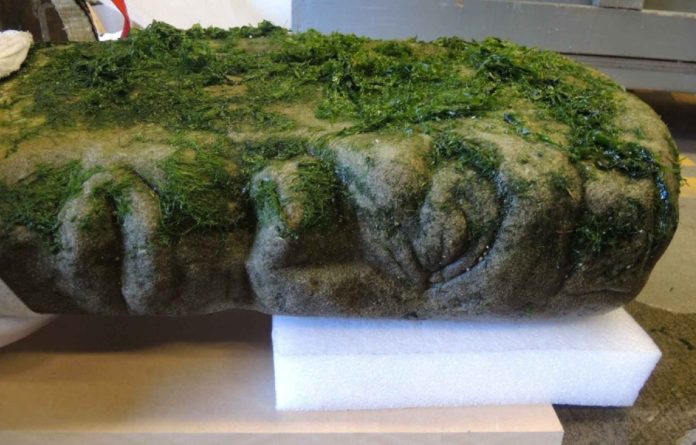The Royal BC Museum has confirmed that a carved stone pillar found on a beach in Victoria is an authentic Indigenous artifact.
Local resident Bernhard Spalteholz first brought the pillar to the attention of the museum in the summer of 2020.
Spalteholz was walking along the beach between Finlayson and Clover Points on July 12th, 2020 when an unidentified passerby told him about the item.
He then found the stone carving and took a series of photos, later sharing them with Royal BC Museum curator of archaeology Grant Keddie.
Keddie and some helpers returned to the beach on July 16th and carefully moved the stone to the museum.
The curator then reached out to members of the Songhees and Esquimalt Nations to visit and assess the stone.
Following further examinations of the carving, research of Western records and consultations with local communities, Keddie hypothesizes it is a ritual stone pillar.
The museum says this type of pillar was likely related to ceremonies such as the first salmon ceremony, used in puberty rites or related to ceremonies involving the feeding of the dead.
“It’s an exciting find and a clear reminder of the long history of our people living in this region,” said Chief Ron Sam of the Songhees Nation. “We are looking forward to learning much more about the stone.”
“We hope to find more in the future, maybe under the landslide or in the water just offshore,” said Chief Rob Thomas of the Esquimalt Nation. “Our hope is future discoveries may tell a fuller story of the stone`s history.”
The Royal BC Museum conservation team has worked to protect the artifact’s integrity, as it had been immersed in seawater with one side covered in algae.
It is composed of sandstone, a type of rock not found in this area, and does not appear to have been carved with steel tools. It weighs approximately 100 kilograms.
Keddie suggests that based on the location of the discovery, the pillar could be one mentioned by Lekwungen elders to anthropologist Franz Boas in the late 1880s.
In his records, Boas indicated that the location of this pillar was “not far” from military gun batteries that once existed at Finlayson Point in Beacon Hill Park.
More details on the recovery of the artifact and the story of Keddie’s research have been posted to the Royal BC Museum blog.
The museum says they will be working closely with the Songhees and Esquimalt Nations to determine their next steps, including identifying where the artifact will be kept and if will be available for public display.


